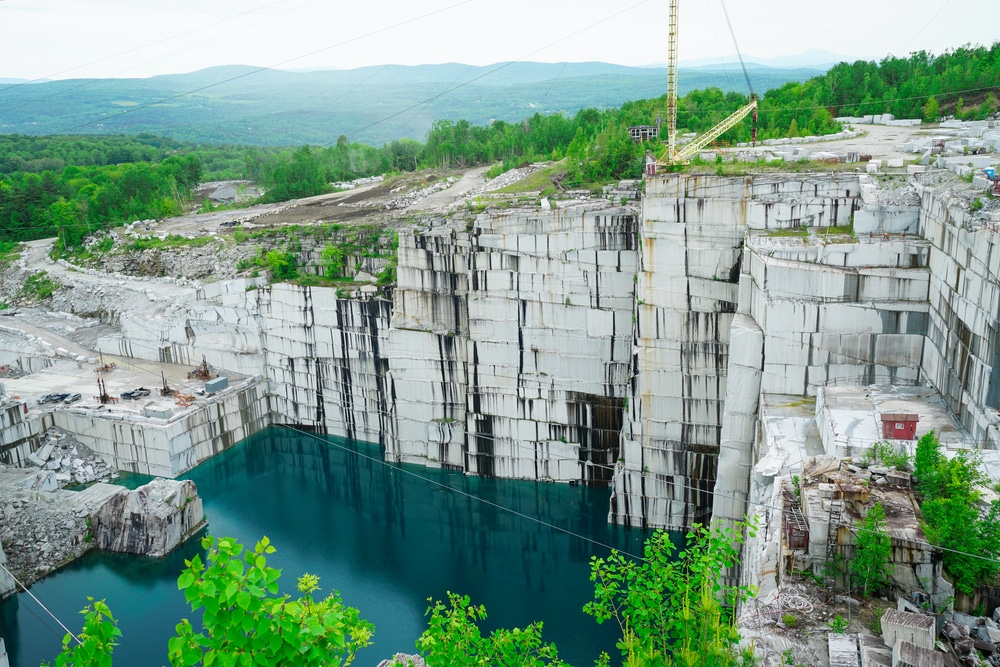Discovering Granite Quarries in South Africa Sector: From Quarry to Work of art
Revealing the Mysteries of Granite Quarrying: Where Toughness and Beauty Meet
The world of granite quarrying is a realm where the raw strength of nature assembles with human artistry to produce structures that stand the examination of time with an air of sophistication. From the midsts of quarries to the meticulous polishing in workshops, the process of transforming granite into building marvels is a complicated dance of practice and development. As we peer right into the midsts of this old craft, we begin to uncover the hidden ins and outs that form the very significance of our constructed setting.
The Beginnings of Granite Quarrying
In the annals of building history, the origins of granite quarrying are shrouded in a tapestry of old workmanship and geological marvels. Going back to ancient Egypt and Mesopotamia, the extraction of granite from quarries noted the start of a journey that would at some point cause the creation of a few of the globe's most legendary frameworks.
Granite quarrying's origins can be mapped to the proficient craftsmens that identified the rock's durability and aesthetic appeal. Through a mix of primitive devices and large resolution, these very early quarry workers discovered granite blocks that would become the building blocks of civilizations.
As civilizations evolved, so did the strategies of quarrying granite. The Romans, renowned for their design expertise, established advanced methods for removing granite to create monoliths, temples, and roads that stood the examination of time.
The tradition of these ancient quarrying practices remains to form contemporary architecture, with granite remaining an icon of stamina and beauty in building projects around the world. (granite quarries in south africa)
Devices of the Quarrying Trade
The advancement of granite quarrying strategies from ancient civilizations to modern-day times highlights the important function played by the devices of the quarrying profession in shaping the sector's methods. In ancient times, quarrying devices were simple, typically including knives, hammers, and wedges made from materials like bronze or iron. These devices needed significant workforce and time to extract granite obstructs from quarries.

Additionally, the introduction of pneumatic tools and high-powered equipment has actually significantly reduced the physical labor required in quarrying operations, enhancing employee safety and security and performance. As the quarrying sector proceeds to introduce, the devices of the trade stay at the forefront of driving progress and shaping the future of granite removal.
Removing Blocks of Granite
Making use of precision machinery and progressed techniques, the removal of granite obstructs from quarries has become an innovative process in the modern quarrying sector. Controlled blasting methods are then employed to damage apart the granite right into manageable areas.

Polishing and Ending Up Methods
To attain a perfect surface area on granite blocks, proficient artisans use a series of careful polishing and completing strategies. After the initial removal and forming processes, the granite blocks undertake an extensive sprucing up stage to enhance their all-natural elegance and resilience.
Along with polishing, finishing methods are related to further fine-tune the granite's look. These strategies may include flaming, refining, or cleaning, each offering unique structures and coatings to match various aesthetic preferences. Flaming, as an example, entails revealing the granite surface to heats to produce a harsh, distinctive coating, perfect for outdoor applications where slip-resistance is important. Refining, on the various other hand, gives a matte coating that is smooth to the touch, perfect for indoor countertops and try this out flooring. By thoroughly choosing and applying these polishing and completing methods, craftsmens can change raw granite blocks into splendid items that showcase both stamina and sophistication.

Ecological Impact and Sustainability
With the growing focus on ecological awareness in the market, granite quarrying practices are significantly inspected for their effect on all-natural sources and lasting sustainability. Additionally, the transportation of granite from quarries to refining facilities creates carbon exhausts, additionally adding to ecological deterioration.
To minimize these influences and ensure sustainability in granite quarrying, market stakeholders are taking on numerous steps. Applying innovative modern technologies to minimize energy usage and water use, recovering quarried land for eco-friendly repair, and advertising responsible sourcing techniques are some approaches being utilized. Qualifications such as the Forest Stewardship Council (FSC) and the Management in Power and Environmental Layout (LEED) assistance consumers determine environmentally friendly granite products.
Verdict
In conclusion, granite quarrying is a procedure that calls for specialized tools and techniques to remove blocks of granite and polish them to a high degree of surface. While the environmental influence of quarrying can be considerable, efforts are being made to enhance sustainability practices useful source in the sector. In general, granite quarrying is a fragile balance in between taking advantage of the stamina and style of this natural rock while lessening its influence on the atmosphere.